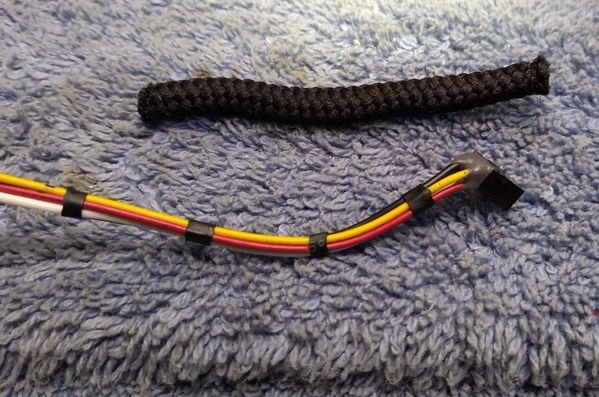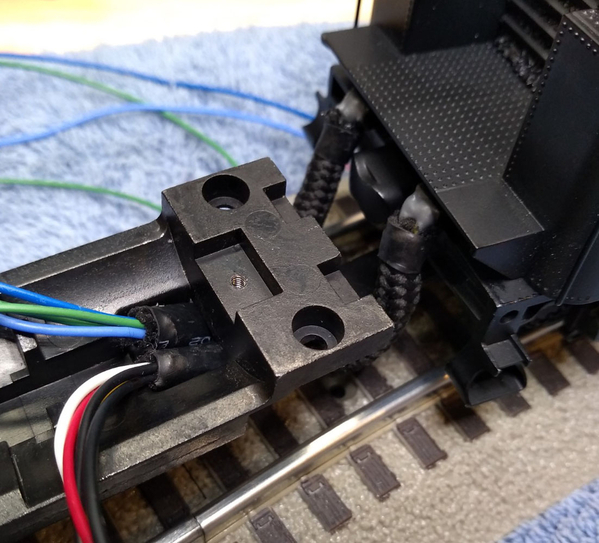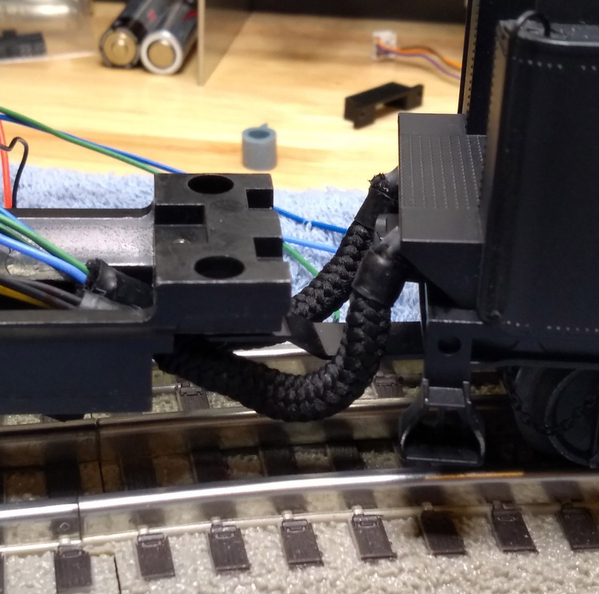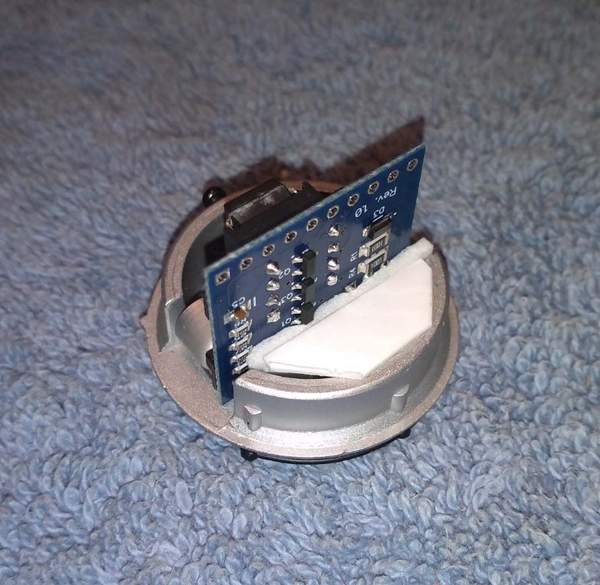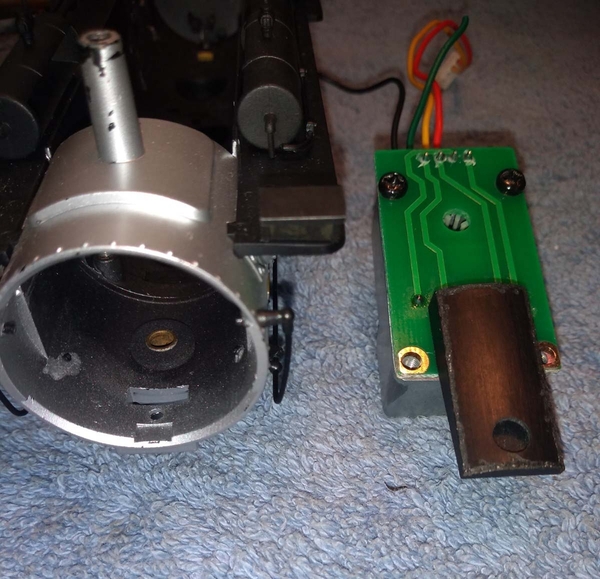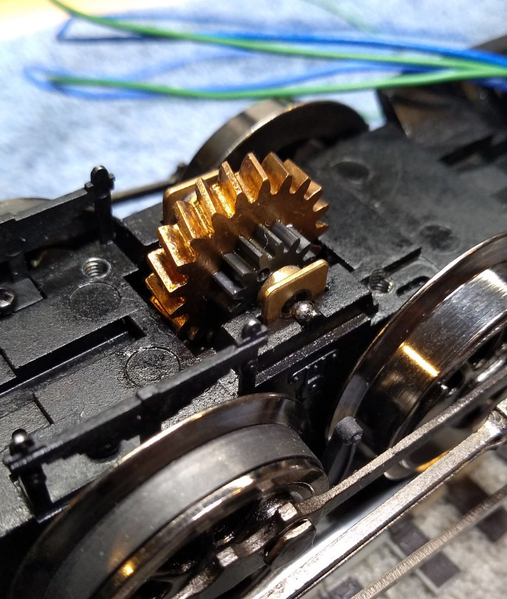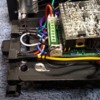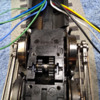So this ended up taking a little longer than I expected to give another update - there's no doubt this little engine has tried my patience and been frustrating at times ![]() No I haven't put a scale pilot on the engine, and with all of the other challenges I decided not to try to figure out how to mount one of the CB&Q Cuckoo clock headlights - at least not yet. My focus has been on just trying to get the engine back together and fully operational again, and then I can tinker with some of the smaller details a little more leisurely.
No I haven't put a scale pilot on the engine, and with all of the other challenges I decided not to try to figure out how to mount one of the CB&Q Cuckoo clock headlights - at least not yet. My focus has been on just trying to get the engine back together and fully operational again, and then I can tinker with some of the smaller details a little more leisurely.
First, the tether... that darn wire tether between the engine and tender... Playing around with the chassis and tender on some curved track on the bench I really thought it looked like the tether I described previously would be enough more flexible between not having as many wires, and using more flexible wires. As I got further into it though it I realized that wasn't going to be the case so it was back to the drawing board. What I ended up doing was scrapping the idea of having the two sided tether go back to one common plug... After all, the wires come out of the engine on either side of the drawbar, so why not just keep them separate? So, the new direction is shown in the pictures below, with two connectors mounted on top of the tender frame and below the tender deck. I had to cut two holes in the bottom of the front of the tank, but overall I think the connections ended up being pretty inconspicuous. And, the two tethers are able to droop down and to the either side of the drawbar when connected, and doesn't pinch or bind on the drawbar like the original.
Some additional details on the tethers themselves... You can see how I bundled the wires together with occasional rings of shrink tubing to help keep them neat and tidy. I also applied some epoxy which I have yet to paint black to reinforce where the wires emerge from the connectors, and also give them a permanent downward angle. One of the things I continued to struggle with was what to cover the wires with that would conceal them but yet also be nice and flexible - and hopefully have an appearance somewhat similar to hoses. The black braided covering is actually a chunk of shoelace with the inner strands removed. This is really nice and flexible, and really doesn't contribute any stiffness to the tethers beyond what the wires themselves do. I shrunk on a little shrink tubing on both ends to help keep the ends tidy.
The super chuffer is small enough that it was able to fit into the smokebox. Below shows how I created a little "shelf" on the backside of the smokebox front, super glued in to place, which I could then attach the super chuffer with double sided mounting tape.
I soldered the wires on to the board with it just outside the smokebox, and there was enough room to bend the wires over without pinching when the front and board were inserted during final assembly.
Another thing I noticed that needed a little attention was the interface of the smoke unit with the bottom of the stack. The picture below shows the bottom of the stack, and the extension piece on the TAS smoke unit that's supposed to mate with it. Which of course it didn't quite... The hole in the top of the extension piece had to be shaved to one side just slightly so that it would actually push over the bottom of the stack - and hopefully prevent smoke fluid from wanting to leak around it and making a mess in the smokebox. One other thing to note is that I did have to replace the resistor with one of the correct value per the instructions with the super chuffer.
In case anyone is curious I thought I'd also include a couple pictures of the gearbox these engines have... In this regard these appear to be really well made. I was especially intrigued by the two little balls on either end of the upper shaft to keep it centered with a minimum of friction. I was definitely careful not to lose either of those through all of this!
Needless to say, final assembly was a challenge no matter how hard I tried to keep things as neat and tidy as possible... There just ends up being a lot of wires squeezed in above the gearbox and above the motor, while trying not to pinch anything along the way. Even though the chuff generator board was installed in the same location as the TAS board, I ended up having to take the engine apart several times due to "something", somehow, pushing the board out of position enough when assembled to throw the tach sensor spacing off so that it would either work erratically or not at all. I didn't think to capture a picture, but I ended up discarding the original tach sensor mount so I could offset the chuff generator location about 45 degrees to one side. After I did this and reassembled the engine, the chuff generator finally worked. I'm definitely not going to EVER take the boiler back off of this engine again unless I have a very compelling need to do so!
At the end of the day though, I was finally able to see the engine operate on the test stand, and have take a few loops on my carpet central layout. I'll give it some more run time to make sure it's really going to continue to run well before I reinstall the remaining detail pieces, and look into blackening the wheels and rods to get rid of their shine. This has been an interesting project for sure and took a lot more time than I originally thought, but it is nice to see it run again!





